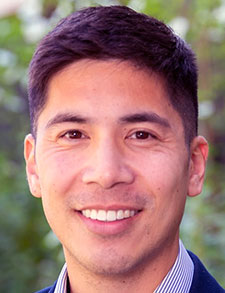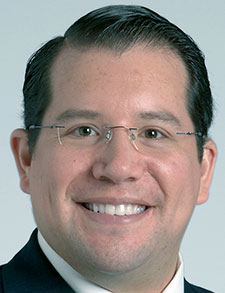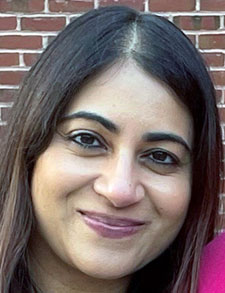 Part I of this two-part series focused on the academic milieu surrounding international medical graduates (IMGs), the perception of the country of origin, and migrating to the U.S. This article focuses on applying to U.S medical residency, perceptions of the U.S. healthcare system, and the overall impact of IMGs in the U.S.
Part I of this two-part series focused on the academic milieu surrounding international medical graduates (IMGs), the perception of the country of origin, and migrating to the U.S. This article focuses on applying to U.S medical residency, perceptions of the U.S. healthcare system, and the overall impact of IMGs in the U.S.
We continue the discussion with Moisés Auron, MD, an academic med-peds hospitalist at the Cleveland Clinic and a professor of medicine and pediatrics at the Cleveland Clinic Lerner College of Medicine of Case Western Reserve University in Cleveland, Patricia Santos, MD, MBA, an assistant professor of medicine at the division of hospital medicine, and the associate chief of quality and the safety chair for the hospital medicine division and the oncology co-management service at the Albert B. Chandler Hospital at the University of Kentucky in Lexington, Ky., Gabriel Tse, MD, faculty in the division of pediatric hospital medicine at Lucile Packard Children’s Hospital, Stanford University School of Medicine in Stanford, Calif., and Priya Joseph, MD, the specialty medical director for Carolinas Hospitalist Group at Atrium Health Carolinas Medical Center in Charlotte, N.C.
Applying for U.S. medical residency

Dr. Tse
“I had never heard of the term ‘IMG’ and I didn’t necessarily understand the implications of being an IMG and the potential struggle of going back to the U.S. or Canada,” Dr. Tse said about his experience applying for a fellowship in the U.S. “So, it’s never explicitly said, right, but I think there’s this underlying assumption that by having trained in a different health system or different country, you are a less desirable applicant and therefore a worse doctor, which is not true, [and makes being an IMG even more] challenging. But I think when I was applying to these programs, [I felt like maybe I was] an inferior applicant to these U.S. medical graduates or Canadian medical graduates.”
Dr. Tse says a resignification of the term IMG could prove useful. “I wonder if there’s a way [to] go back to the data, to analyze the IMGs who have been most successful and see what those specific characteristics were and build your admissions based on that. I think that would make sense, taking a data approach rather than a subjective, biased approach. A more data-driven approach seems fairer in the end.”
Perception of the U.S. healthcare system
As foreigners with experience in different healthcare settings, IMGs are in a unique position to analyze the U.S. healthcare system. We explored this topic with our interviewees, touching on themes of medical waste and the administrative complexity of medical assistance, as well as the focus on academics and research that U.S. training programs have.

Dr. Santos
“Now being in the system, I will say that the U.S. spends a lot on healthcare,” Dr. Santos said. “Expenses are the highest in the world, but our patient outcomes are not any better, or even worse than other first-world countries. There’s a lot of medical waste, we have to work on high-value care to [improve on this]. The U.S. healthcare system is good because most patients get care, but there certainly have to be some guardrails in terms of the things we can order, to [adjust to the inflation of prices while providing good medical care].”
She says that in the U.S. “we assume insurance will cover the costs of medical care, so we order whatever we need when our patients are admitted to the hospital. The burden of thinking about the patients’ financial health is not with us because there are insurance companies or [other institutions that take that role].”

Dr. Auron
“From a systems perspective, the U.S. healthcare system is completely different than any other,” Dr. Tse said. “There’s a huge amount of administrative complexity, and I think there are more conversations about money, [specifically regarding insurance policies] in the U.S. healthcare system than I appreciated when I was in the U.K. or Canada. That shocked me when I first started [my training here].”
Dr. Tse said the facts that medical institutions are well-funded from an academic perspective and that there are more research opportunities here than in Canada were the main motivators for pursuing his training in the U.S. “The U.S. has highly prestigious medical institutions, and it’s a great place to get your training, that’s what attracted me to come here for fellowship. There are a lot of opportunities here,” he said.
Dr. Auron says medical attention is more practical in the U.S. “There are certain things that, perhaps, are too practical and lack a little more detail,” he said. “There are things that in Mexico are more detailed but less practical. I was able to start combining the two things”.
Impact of IMGs on the U.S. healthcare system
The final topic explored by our interviewees was the perceived impact IMGs have on the U.S. healthcare system. Dr. Santos talked about the role IMGs have played in ensuring healthcare accessibility. “I will say that IMGs are crucial to assure that patients in underserved areas get [proper medical care],” she said. “There are some IMGs who, after training, need to fulfill their waiver, and they are assigned to underserved areas. It’s a long conversation about that system, although it has helped somehow to assure that these underserved areas have good doctors.”
Dr. Tse says his experience in multiple healthcare systems has allowed for a continued discussion of otherwise routine clinical practices. “I think the risk [of staying at a single institution] is that [you] think there’s only one way of doing things,” he said. “Because I’ve moved so much, it’s easy for me to question things and wonder, ‘Hey, I’ve never seen things done like that, like is there a reason?’ I find that that’s what I do quite a bit and just question ‘Why do we do things that way?’, which leads to a discussion about [the topic], and a [review of the evidence that supports that specific practice]. It’s kind of difficult to quantify, but I feel like I have a broad perspective [about medicine]. That’s what happens when you move around and see different institutions. I think that is really valuable.”
When reflecting upon their home healthcare systems, Dr. Santos and Dr. Auron recognize high-value care as being an inherent quality to them, and something that IMGs bring with them when migrating to the U.S.
“As someone who has been in a resource-poor setting, I still am cognizant of high-value care. I still ask myself, ‘Does the patient really need another blood draw today? Does the patient need an MRI? Is my pretest probability for this diagnosis low enough that I don’t need an MRI to [confirm] that?’” Dr. Santos said. “There’s also this one experience that always stuck with me. In the Philippines, the suture kits are reusable. You usually sterilize them after usage, you don’t throw them away. In the U.S., most kits are a one-time use. So, there was one time I was opening the suture kit and there were these perfect pair of scissors I had to throw away after using them. It felt like a great waste. I think I’m more aware of just the medical waste and thinking with a mindset of high-value care in a resource-rich country like this.”
Dr. Auron agrees. “In Mexico, since we do not have all the resources, or it is expensive and patients have to pay, we are very careful when we ask for diagnostic studies and resources,” he said. “In the U.S., resources are asked for indiscriminately. High-value medicine is something that IMGs bring with them. In the U.S., it is assumed that things have to happen, that if the patient has to have an MRI, it has to happen, and that the insurance is going to pay for it. People then don’t stop themselves to think about the cost of things, and that sometimes, the patient will be the one paying for it.”
Providing high-value care and keeping costs in mind are both possible through careful balancing.
“You don’t want to be on the extreme where you don’t do things because you’re worried about resources, nor where you order everything because resources are not an issue,” Dr. Santos said. “As a physician, you have to be in that sweet spot where the patients get the care that they need, without implying a huge waste to the healthcare system. You have to be able to practice good medicine without overdoing either side.”

Dr. Joseph
Dr. Joseph reflected on the impact that migrating to the U.S. has had on her ability to cope with difficult situations. “Having moved from one medical system very focused on communicable diseases to another where the disease spectrum is very different, and having gone through so much change and hardships has helped me be more resilient and less likely to burn out compared to what I see with my colleagues,” she said. “There’s a lot of talk about resilience and physicians getting burned out and wanting to work fewer shifts and retire early. The pandemic played a big part in that; I think it professionally aged many of us. But being a foreign medical graduate helped me be more resilient through these last few years.”
Conclusion
Our exploration of the IMG experience in the U.S. healthcare system reveals a multifaceted narrative. IMGs bring a wealth of experience and knowledge from diverse healthcare settings, often honed in resource-limited environments. This fosters a focus on high-value care and a questioning of routine practices, potentially leading to positive systemic changes. Additionally, IMGs play a critical role in ensuring healthcare access in underserved areas. However, their journey is not without challenges, often navigating complex healthcare systems while adapting to a different culture and overcoming the perception of being “less desirable” as applicants. As the U.S. healthcare system grapples with its issues, recognizing the value proposition of IMGs and fostering a smoother integration process can lead to a more robust and culturally rich medical workforce.

Nikolai Emmanuel Bayro Jablonski
Nikolai Emmanuel Bayro Jablonski is a medical graduate of Universidad de Guadalajara, Nuevo Hospital Civil de Guadalajara Juan I. Menchaca, Guadalajara, Jalisco, México. He would like to thank Diana Paulette Evans, MD, MSc for her assistance in the interview process for this article.